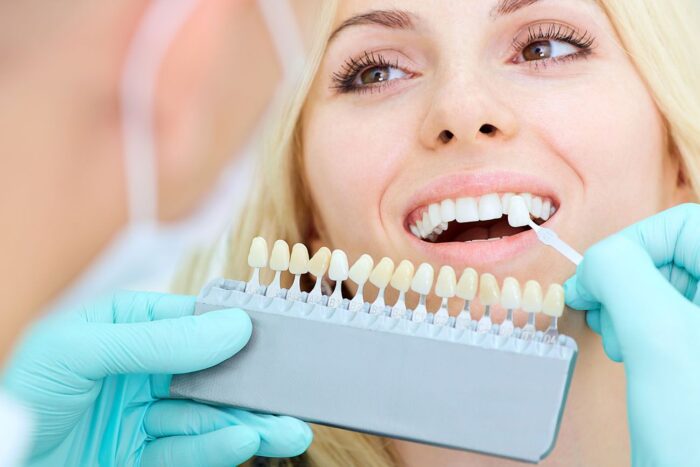Chemical whitening, also known as bleaching, is a popular cosmetic dental treatment used to lighten the color of teeth. The process involves applying a bleaching agent, usually hydrogen peroxide or carbamide peroxide, to the teeth to break down and remove stains and discoloration. But how exactly does this process work?
When you eat or drink, the outer layer of your teeth, known as the enamel, can become stained or discolored. This is often due to the presence of pigmented molecules, such as those found in coffee or tea. Also, red wine or tobacco can also discolor your teeth. Additionally, as you age, the enamel on your teeth can naturally become thinner, allowing the yellow or brownish dentin layer underneath to show through more prominently.
Chemical whitening works by breaking down the pigmented molecules in the enamel and dentin layers of the teeth, revealing a brighter, whiter appearance. The active ingredient in most chemical whitening products is hydrogen peroxide or carbamide peroxide. These compounds release oxygen molecules, which react with the pigmented molecules in the teeth, breaking them down into smaller, less visible pieces.

What are the Different Types of Whitening?
Once you consult your dentist, you can decide which option is right for you.
In-office whitening
In-office whitening is a professional teeth whitening treatment that a dentist or dental hygienist performs. The process typically involves applying a high concentration of peroxide to the teeth using custom-fitted trays or a light-activated gel. The activation device’s light or heat helps accelerate the chemical reaction, producing faster and more dramatic results.
Take-home whitening
Take-home whitening is a more convenient and affordable option allowing you to whiten your teeth in the comfort of your home. Your dentist will provide you with custom-fitted whitening trays and a lower concentration of whitening agent to use over a period of several weeks. This gradual process allows you to achieve the desired level of whitening at your own pace.
Whitening toothpaste
Whitening toothpaste is a common over-the-counter whitening option that is often less effective than in-office or take-home whitening. These kinds of toothpaste typically contain small amounts of whitening agents. Additionally, it contains abrasive particles that help to scrub away surface stains. While whitening toothpaste can be effective, it may not be powerful enough to remove more stubborn stains or discoloration.
It is important to note that chemical whitening can be an effective way to lighten the color of teeth. However, it is not a permanent solution. Over time, your teeth may become stained again due to factors such as diet, tobacco use, or age. Additionally, chemical whitening may not be suitable for everyone. For example, if you have untreated tooth decay or gum disease, you may need to address these issues before undergoing whitening treatment.
